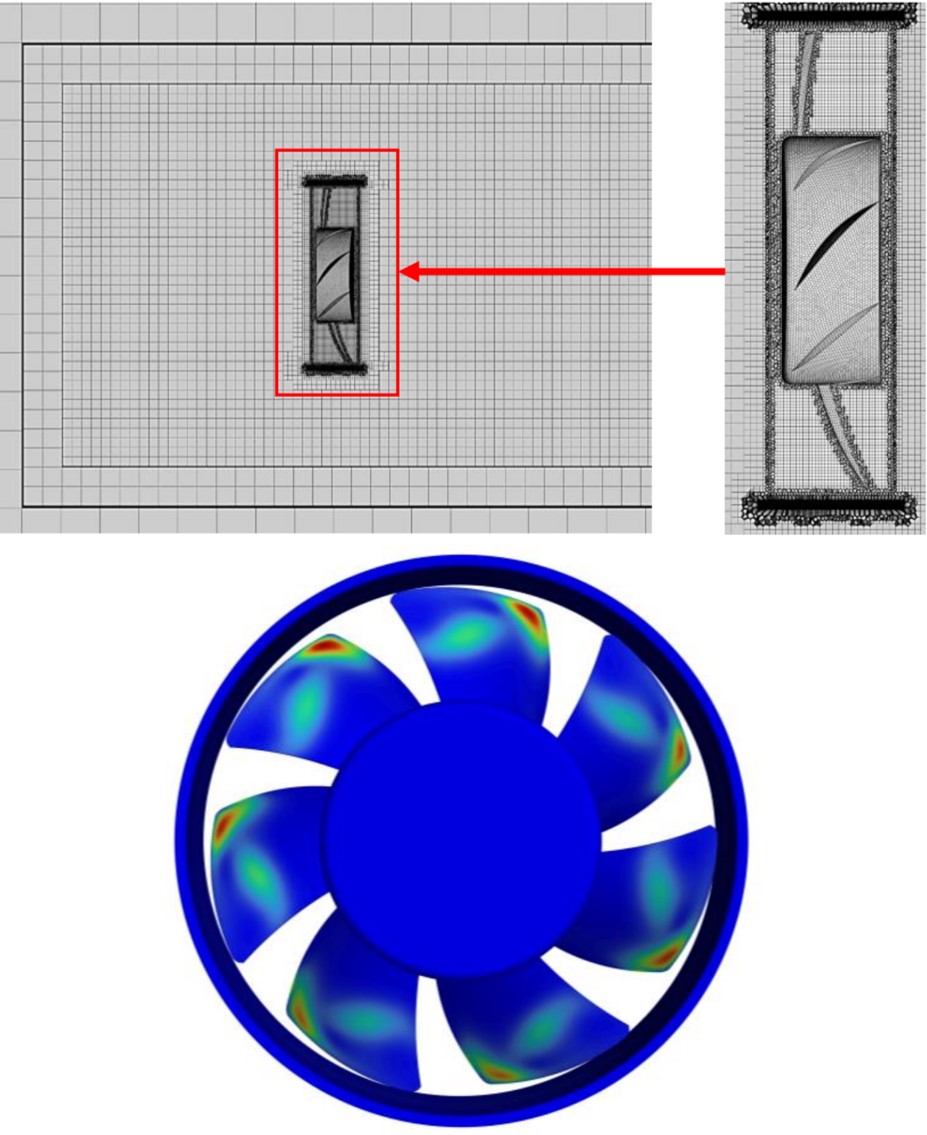Numerical Investigation for Aerodynamic Noise of a Low Mach Number Axial Fan
Main Article Content
Abstract
Typically, the noise generated by axial fans arises from both the motion of mechanical parts and the turbulence of the airflow. When the airflow interacts with the stationary and rotating surfaces of an axial fan, aerodynamic noise is produced. To investigate this phenomenon, the study used unsteady Computational Fluid Dynamics (CFD) simulations with Large Eddy Simulation (LES) to capture the turbulent flow field. The Direct Simulation Method (DSM) and Ffowcs Williams & Hawkings (FW-H) method were used to predict the Sound Pressure Level (SPL) spectra of the aerodynamic noise. The results show that the SPL spectra trend from the DSM and FW-H is consistent at various receive points. However, the SPL spectra from the DSM are lower than that from the FW-H in the far-field noise region. Moreover, the main noise source of an axial fan is found on the propeller surface, which is dominated at the leading edge near the blade tip region.
Article Details

This work is licensed under a Creative Commons Attribution-NonCommercial-ShareAlike 4.0 International License.
This work is licensed under a Creative Commons Attribution-NonCommercial-ShareAlike 4.0 International License.
References
Münzel T, Gori T, Babisch W, Basner M. Cardiovascular effects of environmental noise exposure. Eur Heart J. 2014;35(13):829-836.
Pinosova M, Andrejiova M, Badida M, Moravec M. Analysis and evaluation of risks from exposure to noise in a working environment. Acta Mechanica Slovaca. 2018;22(3):44-52.
Wu L, Liu X, Wang M. Effects of bionic volute tongue on aerodynamic performance and noise characteristics of centrifugal fan used in the air-conditioner. J Bionic Eng. 2020;17(4):780-792.
Jiang B, Wang J, Yang X, Wang W, Ding Y. Tonal noise reduction by unevenly spaced blades in a forward-curved-blades centrifugal fan. Appl Acoust. 2019;146:172-183.
Killeen J, Davis I, Wang J, Bennett GJ. Fan-noise reduction of data centre telecommunications’ server racks, with an acoustic metamaterial broadband, low-frequency sound-absorbing liner. Appl Acoust. 2023;203:109229.
Glegg S, Devenport W. Open rotor noise. In: Aeroacoustics of Low Mach Number Flows. London: Academic press; 2017. pp. 399-436.
Park M, Lee DJ, Lee H. Inflow effects on tonal noise of axial fan under system resistances. Appl Acoust. 2022;192:108737.
Luo B, Chu W, Zhang H. Tip leakage flow and aeroacoustics analysis of a low-speed axial fan. Aerosp Sci Technol. 2020;98:105700.
Khalid SA, Khalsa AS, Waitz IA, Tan CS, Greitzer EM, Cumpsty NA, et al. Endwall Blockage in Axial Compressors. J Turbomach. 1999;121(3):499-509.
Denton JD. The 1993 IGTI Scholar Lecture: Loss Mechanisms in Turbomachines. J Turbomach. 1993;115(4):621-656.
Ansys. Ansys fluent theory guide [Internet]. 2022 [cited 2022]. Available from: http://www.ansys.com.
Hodor V, Birle D, Nascutiu L, Deac I. Aeroacoustics -noise prediction by using ‘LES’ for signal processing. Energy Procedia. 2017;112:322-329.
Gloerfelt X, Bailly C, Juvé D. Direct computation of the noise radiated by a subsonic cavity flow and application of integral methods. J Sound Vib. 2003;266(1):119-146.
Zore K, Sasanapuri B, Parkhi G, Varghese A. Ansys mosaic poly-hexcore mesh for high-lift aircraft configuration. 21st Annual CFD Symposium; 2019 Aug 8-9, Bangalore. p. 1-11.
Lighthill MJ. On sound generated aerodynamically I. General theory. Proc R Soc Lond A Math Phys Sci. 1952;211(1107):564-587.
Lighthill MJ. On sound generated aerodynamically II. Turbulence as a source of sound. Proc R Soc Lond A Math Phys Sci. 1954;222(1148):1-32.
Ffowcs Williams JE, Hawkings DL. Sound generation by turbulence and surfaces in arbitrary motion. Philos Trans R Soc Lond A Math Phys Sci. 1969;264(1151):321-342.



